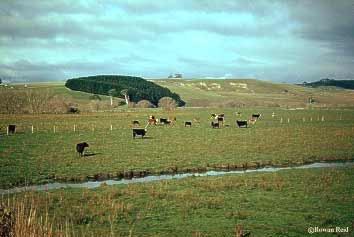|
Location, area and type of forest

The location of a forest can be marked on a
farm plan or topographic map. Making a note of the map coordinates,
or even the longitude and latitude, may be a requirement for
joint ventures etc. The centre of the forest, a prominent
corner or other referencing point may be used.
Where the forest includes areas of different
species, age classes, soil types or performance, the areas
may be separated into homogenous units so as to facilitate
ease of forest measurement. This stratification makes the
results more useful and accurate, and may even reduce the
costs of any sampling procedure.
It is often crucial to obtain an accurate assessment
of each forest block area. This is because most assessments
of timber volume involve the measurement of a sample of trees
rather than the whole stand. The results from the sample are
multiplied out on the basis of the calculated net or stocked
area of each block. Errors in area assessment can result in
large errors in timber volumes.
To calculate the area, an accurate map of the
forest boundary is required. The boundary might be defined
by the location of tree trunks, the extent of the tree canopies
or by the paddock boundaries. Maps can be based on field measurements
of the length and bearings of every side of the plantation
but this is often very time consuming. It may be easier to
identify each block on a topographic map. This can be done
using GPS data collected at each corner. If aerial photographs
are available that show the boundaries of the forest, these
can save time, although it may be necessary to make corrections
for slope or photographic distortions.
Once calibrated for scale, many computer programs
can generate areas of irregular shapes very quickly. Dot matrices
or fine grids copied onto clear plastic sheets are useful
for manually estimating the area of irregular shapes on farm
plans, aerial photographs or topographic maps. For narrow
belts it may be more practical to simply measure the length
of belt rather than try and determine the effective area of
the planting. Results may then be presented in terms of yield
per 100m of belt rather than yield per hectare.
Back to top
|
